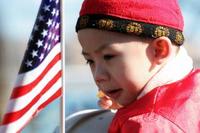omeka
Item set
- Title
- omeka
- Description
- All items
Items
-
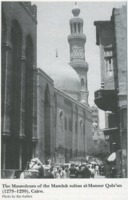 “I arrived at length at Cairo, mother of cities and seat of Pharaoh the tyrant, mistress of broad regions and fruitful lands, boundless in multitude of buildings, peerless in beauty and splendour, the meeting-place of comer and goer, the halting-place of feeble and mighty, whose throngs surge as the waves of the sea, and can scarce be contained in her for all her size and capacity… The mosque of ‘Amr is highly venerated and widely celebrated. The Friday service is held in it, and the road runs through it from east to west. The madrasas [college mosques] of Cairo cannot be counted for multitude. As for the Maristan [hospital], which lies ‘between the two castles’ near the mausoleum of Sultan Qala‘un, no description is adequate to its beauties.”
“I arrived at length at Cairo, mother of cities and seat of Pharaoh the tyrant, mistress of broad regions and fruitful lands, boundless in multitude of buildings, peerless in beauty and splendour, the meeting-place of comer and goer, the halting-place of feeble and mighty, whose throngs surge as the waves of the sea, and can scarce be contained in her for all her size and capacity… The mosque of ‘Amr is highly venerated and widely celebrated. The Friday service is held in it, and the road runs through it from east to west. The madrasas [college mosques] of Cairo cannot be counted for multitude. As for the Maristan [hospital], which lies ‘between the two castles’ near the mausoleum of Sultan Qala‘un, no description is adequate to its beauties.” -
 “At length on April 5th (1326) we reached Alexandria. It is a beautiful city, well-built and fortified with four gates and a magnificent port. Among all the ports in the world I have seen none to equal it except Kawlam [Quilon] and Calicut in India, the port of the infidels [Genoese] at Sudaq in the land of the Turks, and the port of Zaytun in China… One of the learned men of Alexandria was the qadi, a master of eloquence, who used to wear a turban of extraordinary size...Another of them was the pious ascetic Burhan ad-Din, whom I met during my stay and whose hospitality I enjoyed for three days. One day as I entered his room he said to me ‘I see that you are fond of travelling through foreign lands.’ I replied ‘Yes, I am’ (though I had as yet no thought of going to such distant lands as India or China). Then he said ‘You must certainly visit my brother Farid ad-Din in India, and my brother Rukn ad-Din in Sind, and my brother Burhan ad-Din in China, and when you find them give them greeting from me.’ ” Transition in trade routes from Persian Gulf to Red Sea due to fall of Baghdad to Mongols. By this time Alexandria was an important connection as a Red Sea port to the Mediterranean as well as to Southern Arabia.
“At length on April 5th (1326) we reached Alexandria. It is a beautiful city, well-built and fortified with four gates and a magnificent port. Among all the ports in the world I have seen none to equal it except Kawlam [Quilon] and Calicut in India, the port of the infidels [Genoese] at Sudaq in the land of the Turks, and the port of Zaytun in China… One of the learned men of Alexandria was the qadi, a master of eloquence, who used to wear a turban of extraordinary size...Another of them was the pious ascetic Burhan ad-Din, whom I met during my stay and whose hospitality I enjoyed for three days. One day as I entered his room he said to me ‘I see that you are fond of travelling through foreign lands.’ I replied ‘Yes, I am’ (though I had as yet no thought of going to such distant lands as India or China). Then he said ‘You must certainly visit my brother Farid ad-Din in India, and my brother Rukn ad-Din in Sind, and my brother Burhan ad-Din in China, and when you find them give them greeting from me.’ ” Transition in trade routes from Persian Gulf to Red Sea due to fall of Baghdad to Mongols. By this time Alexandria was an important connection as a Red Sea port to the Mediterranean as well as to Southern Arabia. -
 “I left Tangier, my birthplace, on Thursday, 2nd Rajab, 725 [14th June, 1325], being at that time twenty-two [lunar] years of age, with the intention of making the Pilgrimage to the Holy House [at Mecca] and the Tomb of the Prophet [at Medina]. I set out alone, finding no companion to cheer the way with friendly intercourse, and no party of travellers with whom to associate myself. Swayed by an overmastering impulse within me, and a long-cherished desire to visit those glorious sanctuaries, I resolved to quit all my friends and tear myself away from my home. As my parents were still alive, it weighed grievously upon me to part from them, and both they and I were afflicted with sorrow.” Cosmopolitanism of the Hajj, religious and commercial center.
“I left Tangier, my birthplace, on Thursday, 2nd Rajab, 725 [14th June, 1325], being at that time twenty-two [lunar] years of age, with the intention of making the Pilgrimage to the Holy House [at Mecca] and the Tomb of the Prophet [at Medina]. I set out alone, finding no companion to cheer the way with friendly intercourse, and no party of travellers with whom to associate myself. Swayed by an overmastering impulse within me, and a long-cherished desire to visit those glorious sanctuaries, I resolved to quit all my friends and tear myself away from my home. As my parents were still alive, it weighed grievously upon me to part from them, and both they and I were afflicted with sorrow.” Cosmopolitanism of the Hajj, religious and commercial center. -
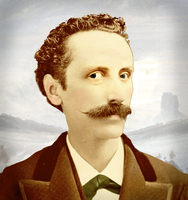
-
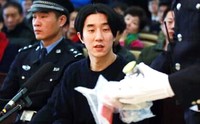
-
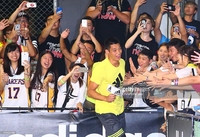
-
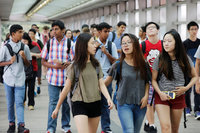
-
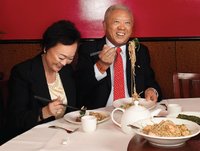
-
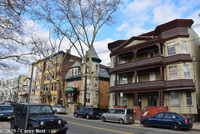 The seventh image contains a row of homes on Walnut Street in the Ironbound section of Newark. Homes in the Ironbound are typically very close together and are predominantly made for multi-families with 60% of the buildings being two-and three-family homes. The photographer does a successful job capturing this housing attribute by creating an image showing a row of many homes. The camera angle is facing diagonally down the road, allowing for more homes to be seen until the image eventually cuts off. This creates a sense of never-ending, close in proximity, homes. This close proximity aids in the production of the tight-knit community that the Ironbound is so well known for. The distance of the camera gives the street more depth and allows the viewer to see the street and all of the cars on it. The many cars on the street reveal the truth about space issues and the difficult task it is to find parking in this section of the city. A few different homes are shown in the picture as three-family, single family, and apartment style options are all present. The single family home shows a historic side of it through its architecture, emphasizing the history and age of the Ironbound. The photographer was effective in showing what the average homes looked like in this neighborhood of Newark and explaining the difficulty of parking and the tightness of the community.
The seventh image contains a row of homes on Walnut Street in the Ironbound section of Newark. Homes in the Ironbound are typically very close together and are predominantly made for multi-families with 60% of the buildings being two-and three-family homes. The photographer does a successful job capturing this housing attribute by creating an image showing a row of many homes. The camera angle is facing diagonally down the road, allowing for more homes to be seen until the image eventually cuts off. This creates a sense of never-ending, close in proximity, homes. This close proximity aids in the production of the tight-knit community that the Ironbound is so well known for. The distance of the camera gives the street more depth and allows the viewer to see the street and all of the cars on it. The many cars on the street reveal the truth about space issues and the difficult task it is to find parking in this section of the city. A few different homes are shown in the picture as three-family, single family, and apartment style options are all present. The single family home shows a historic side of it through its architecture, emphasizing the history and age of the Ironbound. The photographer was effective in showing what the average homes looked like in this neighborhood of Newark and explaining the difficulty of parking and the tightness of the community. -
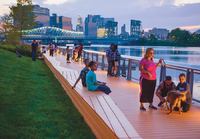 The sixth image is that of people on the newly created boardwalk at Riverfront Park. Riverfront Park is a new twelve-acre park that, as the name states, sits up next to the Passaic River. The boardwalk was built a year after the completion of the park itself, which was 2012, and is the first available public access point to the river. The picture contains framing techniques that create the image of a spectacular boardwalk on the edge of a stereotypical poor and dull city. People of all ages and ethnicities are in this photo. A man with tattoos shows compassion as he puts a Caucasian woman’s dog with a little boy. Media stereotypes people that have tattoos as thuggish and ghetto, which makes the picture ironic as this man is bending down and petting an excited dog. A Hispanic boy and a Caucasian boy are sitting on one edge of the boardwalk and appear to both be looking at something in the distance, showing comradery between people of two different ethnicities. An older man is playing with a young kid in the grass on the hill. A family all seems to be bonding together, leaning over the railing, gazing across the river. Ethnographic effects are used in this photo because the camera distance is close enough that the audience can see the faces and clothing of most of the people in the image. Everyone’s body posture and position is relaxed and open, showing signs of comfort and satisfaction. The photographer successfully used children, family, and animals to gain sympathy from the audience and create an image of a beautiful and fun place for people of all kinds to go.
The sixth image is that of people on the newly created boardwalk at Riverfront Park. Riverfront Park is a new twelve-acre park that, as the name states, sits up next to the Passaic River. The boardwalk was built a year after the completion of the park itself, which was 2012, and is the first available public access point to the river. The picture contains framing techniques that create the image of a spectacular boardwalk on the edge of a stereotypical poor and dull city. People of all ages and ethnicities are in this photo. A man with tattoos shows compassion as he puts a Caucasian woman’s dog with a little boy. Media stereotypes people that have tattoos as thuggish and ghetto, which makes the picture ironic as this man is bending down and petting an excited dog. A Hispanic boy and a Caucasian boy are sitting on one edge of the boardwalk and appear to both be looking at something in the distance, showing comradery between people of two different ethnicities. An older man is playing with a young kid in the grass on the hill. A family all seems to be bonding together, leaning over the railing, gazing across the river. Ethnographic effects are used in this photo because the camera distance is close enough that the audience can see the faces and clothing of most of the people in the image. Everyone’s body posture and position is relaxed and open, showing signs of comfort and satisfaction. The photographer successfully used children, family, and animals to gain sympathy from the audience and create an image of a beautiful and fun place for people of all kinds to go. -
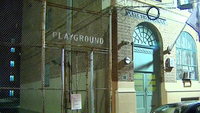 Image five is a picture of one of the Newark public schools that hosts kindergarten through eighth grade, the Oliver Street School. Construction for the school began in 1868 and was completed soon after. Obviously a historic building and school, attention was drawn to the school when a first grader died after experiencing flu-like symptoms. The image is a view of outside the building of the school. Upon looking at the image, the audience will evoke a sense of fear. The image appears as if it would be in a horror film, like Nightmare on Elm Street, and almost frightens the viewer. The angle of the camera is slightly facing up, making the building and playground cage attached to it seem massive and overpowering. The colors are all dull stimulating a feeling of loss and depression. The camera distance allows the audience to real the “Playground” letters, etched into the cage. The cage, closed off by chains and a lock, is rusted over and appears unsanitary and dirty. There is a little light shining on the sign and entrance of the school, but inside the playground it is pitch black. The photographer may have chose to take the camera in this way to show that although historic, the establishment is unsafe and therefore unfit for children to properly learn in and even survive in, as an innocent first grader found out.
Image five is a picture of one of the Newark public schools that hosts kindergarten through eighth grade, the Oliver Street School. Construction for the school began in 1868 and was completed soon after. Obviously a historic building and school, attention was drawn to the school when a first grader died after experiencing flu-like symptoms. The image is a view of outside the building of the school. Upon looking at the image, the audience will evoke a sense of fear. The image appears as if it would be in a horror film, like Nightmare on Elm Street, and almost frightens the viewer. The angle of the camera is slightly facing up, making the building and playground cage attached to it seem massive and overpowering. The colors are all dull stimulating a feeling of loss and depression. The camera distance allows the audience to real the “Playground” letters, etched into the cage. The cage, closed off by chains and a lock, is rusted over and appears unsanitary and dirty. There is a little light shining on the sign and entrance of the school, but inside the playground it is pitch black. The photographer may have chose to take the camera in this way to show that although historic, the establishment is unsafe and therefore unfit for children to properly learn in and even survive in, as an innocent first grader found out. -
 The fourth image is an overhead view of a mass amount of people celebrating Portugal Day. Portugal Day, called Iberia, is an annual street festival that celebrates the Portuguese people, language, and their culture. It has become an immensely popular event for people of all ethnicities, not just for Portuguese-Americans. The camera distance is far enough where faces of the people aren’t visible, but close enough where the audience can see details of the event. The camera angle is above all of the people and shows just how many crowded around the streets for the festival. The large sum of people creates a bigger sense of community of the city. Many different skins colors and races are visible in the picturing showing a conjoining of everybody, not just the Hispanic community. The Portuguese and American flags are visible on a pole in the center of the picture, creating a sense of welcoming and warmth for viewers that may potentially be interested in attending the festival themselves. Media often stereotypes the Latino culture as heavy alcohol drinkers. This media stereotype is prevalent in the image as a giant can of Miller Lite in the background, which may catch the attention of the audience. The image evokes a sense of fun and celebration for people of all ethnicities during the Iberia festivities.
The fourth image is an overhead view of a mass amount of people celebrating Portugal Day. Portugal Day, called Iberia, is an annual street festival that celebrates the Portuguese people, language, and their culture. It has become an immensely popular event for people of all ethnicities, not just for Portuguese-Americans. The camera distance is far enough where faces of the people aren’t visible, but close enough where the audience can see details of the event. The camera angle is above all of the people and shows just how many crowded around the streets for the festival. The large sum of people creates a bigger sense of community of the city. Many different skins colors and races are visible in the picturing showing a conjoining of everybody, not just the Hispanic community. The Portuguese and American flags are visible on a pole in the center of the picture, creating a sense of welcoming and warmth for viewers that may potentially be interested in attending the festival themselves. Media often stereotypes the Latino culture as heavy alcohol drinkers. This media stereotype is prevalent in the image as a giant can of Miller Lite in the background, which may catch the attention of the audience. The image evokes a sense of fun and celebration for people of all ethnicities during the Iberia festivities. -
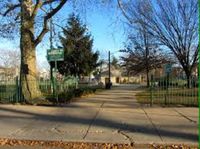 The third image is slightly different from the first two because it includes no people at all. It is an image of Independence Park, the largest park in the Ironbound, containing 12.5 acres of land and multiple sports fields and playgrounds for people of all ages. It was purposely named Independence Park to add significance for the foreign-born residents about the belief of democracy. The photographer framed it in a way to add depth and create the appearance of a large park. It does an excellent job capturing a large amount of green in bushes, trees, and grass. Media stereotypes of cities often imply that urban environments have little to no foliage and any space available for such a thing is typically filled by buildings of all kinds. Although room for greenery can be scarce in urban environments, this photo reveals the Ironbound beating this stereotype by creating a place of serenity and enjoyment for all. The camera angle leaves the audience facing the entrance to the park facing the winding sidewalk leading into the complex. This intrigues the audience and makes them want to actually walk down the path and explore more of the historic and immense park.
The third image is slightly different from the first two because it includes no people at all. It is an image of Independence Park, the largest park in the Ironbound, containing 12.5 acres of land and multiple sports fields and playgrounds for people of all ages. It was purposely named Independence Park to add significance for the foreign-born residents about the belief of democracy. The photographer framed it in a way to add depth and create the appearance of a large park. It does an excellent job capturing a large amount of green in bushes, trees, and grass. Media stereotypes of cities often imply that urban environments have little to no foliage and any space available for such a thing is typically filled by buildings of all kinds. Although room for greenery can be scarce in urban environments, this photo reveals the Ironbound beating this stereotype by creating a place of serenity and enjoyment for all. The camera angle leaves the audience facing the entrance to the park facing the winding sidewalk leading into the complex. This intrigues the audience and makes them want to actually walk down the path and explore more of the historic and immense park. -
 Image two uses similar framing devices as those used in image one. This image depicts an extremely popular and multicultural restaurant named Iberia. It has a reputation of serving Portuguese/ Spanish cooking in large portions at very cheap and affordable prices. The camera distance puts the audience at the entrance of the restaurant allowing them to see the entire establishment and all of its amenities. The faces of the people sitting at the restaurant can be slightly seen which create a more personal relationship between the audience and the image. Angled slightly above the people, the camera does an excellent job creating length in the restaurant and making it look large as the viewer can see all the way down the narrow building. Decorations and architecture inside the building make the audience think they are inside a restaurant in another country. The Portuguese, Mexican, Spanish flags are all hung up overtop the customers as well as the United States and New Jersey flags. This creates a sense of multiculturalism and generates a warm and welcoming environment for customers of any ethnicity.
Image two uses similar framing devices as those used in image one. This image depicts an extremely popular and multicultural restaurant named Iberia. It has a reputation of serving Portuguese/ Spanish cooking in large portions at very cheap and affordable prices. The camera distance puts the audience at the entrance of the restaurant allowing them to see the entire establishment and all of its amenities. The faces of the people sitting at the restaurant can be slightly seen which create a more personal relationship between the audience and the image. Angled slightly above the people, the camera does an excellent job creating length in the restaurant and making it look large as the viewer can see all the way down the narrow building. Decorations and architecture inside the building make the audience think they are inside a restaurant in another country. The Portuguese, Mexican, Spanish flags are all hung up overtop the customers as well as the United States and New Jersey flags. This creates a sense of multiculturalism and generates a warm and welcoming environment for customers of any ethnicity. -
 In the first image, multitudes of framing devices are employed to show a grand view of Ferry Street, the most vibrant street in the Ironbound. Its stores are rarely without business and the street is commonly packed with traffic jams. The street is considered the commercial heart of the neighborhood in Newark, NJ and the Hispanic dominance is apparent One of the first things that catch the viewer’s eye are the immigrants walking up the street and looking at the stores. The camera distance is close enough that it makes the viewer feel like he or she is right on the street with the people there. The faces of the immigrants are clearly visible creating a much more personal relationship between the audience and image creating a mirror of emotions between that of the viewer and the people in the photograph. Another noticeable piece of this picture is the first sign that is shown sticking out of the store. It not only say “Portuguese Gift Shop” in large English words, but also says “Casa dos Presentes” in Portuguese. This is incredibly meaningful as it’s exceedingly welcoming for Americans as well as Latinos and especially immigrants that may not know the language. It’s almost a separate “welcome” sign for immigrants. The camera angle allows the audience to be on the street as well as see all the way down it. Looking down the street, it looks like stores go on forever, which tell the viewer that this is a fruitful street. Looking into the store, it appears the Gift Shop is selling a multitude of items including clothes with Portuguese colors on it, showing the pride of the owner’s nationality. This image affects the audience as it shows one of the most prolific streets in Newark and how welcoming it is for the immigrant, creating an image of acceptance and warmth for immigrants and natives alike.
In the first image, multitudes of framing devices are employed to show a grand view of Ferry Street, the most vibrant street in the Ironbound. Its stores are rarely without business and the street is commonly packed with traffic jams. The street is considered the commercial heart of the neighborhood in Newark, NJ and the Hispanic dominance is apparent One of the first things that catch the viewer’s eye are the immigrants walking up the street and looking at the stores. The camera distance is close enough that it makes the viewer feel like he or she is right on the street with the people there. The faces of the immigrants are clearly visible creating a much more personal relationship between the audience and image creating a mirror of emotions between that of the viewer and the people in the photograph. Another noticeable piece of this picture is the first sign that is shown sticking out of the store. It not only say “Portuguese Gift Shop” in large English words, but also says “Casa dos Presentes” in Portuguese. This is incredibly meaningful as it’s exceedingly welcoming for Americans as well as Latinos and especially immigrants that may not know the language. It’s almost a separate “welcome” sign for immigrants. The camera angle allows the audience to be on the street as well as see all the way down it. Looking down the street, it looks like stores go on forever, which tell the viewer that this is a fruitful street. Looking into the store, it appears the Gift Shop is selling a multitude of items including clothes with Portuguese colors on it, showing the pride of the owner’s nationality. This image affects the audience as it shows one of the most prolific streets in Newark and how welcoming it is for the immigrant, creating an image of acceptance and warmth for immigrants and natives alike. -
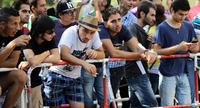 Syrian Asylum Seekers Wait in Line
Syrian Asylum Seekers Wait in Line -
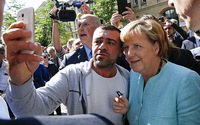 A migrant takes a selfie with German Chancellor Angela Merkel outside a refugee camp near the Federal Office for Migration and Refugees after registration at Berlin's Spandau district in September 2015.
A migrant takes a selfie with German Chancellor Angela Merkel outside a refugee camp near the Federal Office for Migration and Refugees after registration at Berlin's Spandau district in September 2015. -
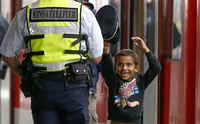 A refugee boy tries on a security officer's cap after arriving in Germany.
A refugee boy tries on a security officer's cap after arriving in Germany. -
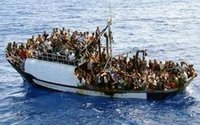 A packed boat filled with migrants crossing the Mediterranean.
A packed boat filled with migrants crossing the Mediterranean. -
 Refugees arrive at the train station in Saalfeld, central Germany.
Refugees arrive at the train station in Saalfeld, central Germany. -
 A family from Syria speaks with a language professional about their application for asylum.
A family from Syria speaks with a language professional about their application for asylum. -

-
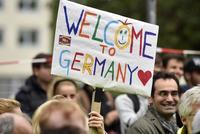 People welcome Syrian Refugees to Germany.
People welcome Syrian Refugees to Germany. -
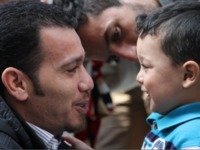 Hussein Ahmed, with his son Ali, 3, moments after they were reunited in Munich. Father and son made the same journey a year and a half apart.
Hussein Ahmed, with his son Ali, 3, moments after they were reunited in Munich. Father and son made the same journey a year and a half apart. -
